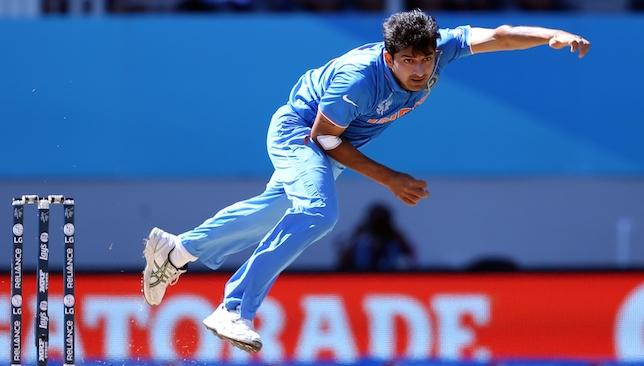
They were not expected to set the stage alight at the World Cup, so poor was India’s build-up to the showpiece event. The Indians had lost the Test series to Australia and were thoroughly outplayed in the tri-series.
– REPORT: Michael Clarke leads Australia to fifth World Cup crown
– #360LIVE: Relive Australia’s 7-wicket win over New Zealand
– #CWC15Final: Clarke dedicates victory to ‘little brother’ Hughes
For nearly three months, they hadn’t even won a tour game. The batsmen were not firing as a unit and the bowlers looked as solid as a stick of rhubarb, as Geoffrey Boycott would put it.
Then, India captain Mahendra Singh Dhoni asked his players to switch off from cricket for a few days to recharge their batteries as being away from home for such a long time seemed to be affecting them. Then came the match against Pakistan, their first in the World Cup.
Everything fell into place and thus began a streak of seven consecutive wins which took the Indians all the way to the semifinal. Shikhar Dhawan scored two centuries with three other batsmen reaching triple digits.
Most MOtM awards in #CWC15: Sarfaraz Ahmed , Shikhar Dhawan, K Sangakkara, M Guptill, AB de Villiers & Trent Boult. (Two MOtM awards apiece)
— Faizan Lakhani (@faizanlakhani) March 29, 2015
The fast bowlers earned the respect of the entire cricketing world for their aggression and pace. And the slow bowlers displayed immaculate control and wicket-taking ability. But against the Aussies, it all fell apart.
The very sight of Steve Smith spooked the Indian bowlers as every ounce of courage they had gained over the previous seven games vanished. A target of 329 in a World Cup semi-final was never going to be chased, not against Mitchell Starc and Mitchell Johnson in their home turf. Still, Indian fans hoped for a miracle.
That miracle never arrived as their top-order batsmen failed to get going against a sustained pace attack by the Aussies. The margin of defeat for India was 95 runs, which summed up the gulf between the two sides, based on form and talent, perfectly. Even so, Dhoni and the Indian team should be very happy with the results they managed.
Their plans failed against one of the best teams in the tournament, but there is no shame in it. Against the rest, they were sensational. The current crop of players showed admirable fight and should form the core group that takes the team forward from here on.
The batsmen proved that they can perform against the best in the business in challenging situations. Dhawan, Virat Kohli, Ajinkya Rahane, Rohit Sharma are here to stay, be sure of that. Ravichandran Ashwin came up with his best performance outside the subcontinent and will be a different bowler from now on.
However, it’s the fast bowlers who have taken everyone by surprise. Mohammad Shami transformed from a hard-working seamer into a lethal quick who regularly got top batsmen out. Umesh Yadav finally learned how to channel all that pace and got a commendable 18 wickets for his efforts.
India doesn’t have fast bowlers they said but all three Indian fasties bowling at 140kmph they never said! #TeamIndia pic.twitter.com/Mi2cOqUbp2
— ღ Atchaya ღ (@Im_Atchu) March 22, 2015
The most improved bowler on show was Mohit Sharma, who cranked up his speed to over 140kmph, a mark no one thought was possible for Sharma to break. The most significant aspect of the performance of all three pacers was that the team didn’t miss the original leader of the pack – Ishant Sharma, who had been ruled out of the tournament due to a knee injury.
Indian cricket now finds itself in an unfamiliar position – having a pool of young fast bowlers who can form a world-class bowling attack. Shami is 25, Mohit 26 and Yadav 27.
Add to it the fastest bowler in operation in India – 25-year-old Varun Aaron – and India suddenly look like they mean business when it comes to fast bowling. Having fearsome seamers is one thing, managing them properly something different altogether.
As Dhoni said after the semi-final defeat to Australia, the way these pacers are handled by state associations left a lot to be desired and he felt poor monitoring of their workload is one of the main reasons Indian pacers lose their sting quicker than those from any other nation.
The onus is on the Board of Control for Cricket in India (BCCI) to ensure that this group of pacers is nurtured and their workload monitored at every level. State associations and clubs can’t be allowed to run them into the ground as they have to serve Indian cricket for years to come.
A simple player management system which tracks the number of overs they bowl every month, as compared to those by leading seamers in other countries, should allow the BCCI to ensure their longevity.
What makes the task slightly easier is the fact that India don’t play a Test series outside the sub-continent until July 2016. And even that doesn’t seem likely, given the fact that it’s a tour of the West Indies, which India won’t be too keen to honour following the Caribbean team’s decision to pull out of their tour of India last year.
So India look set to play in familiar conditions for a good two years, which means the focus will be on spinners and the pacers can be rotated depending on the situation and opposition. The batsmen will continue to shine, the spinners will flourish on dry surfaces. It’s now just a matter of ensuring the pacers are kept in peak condition.